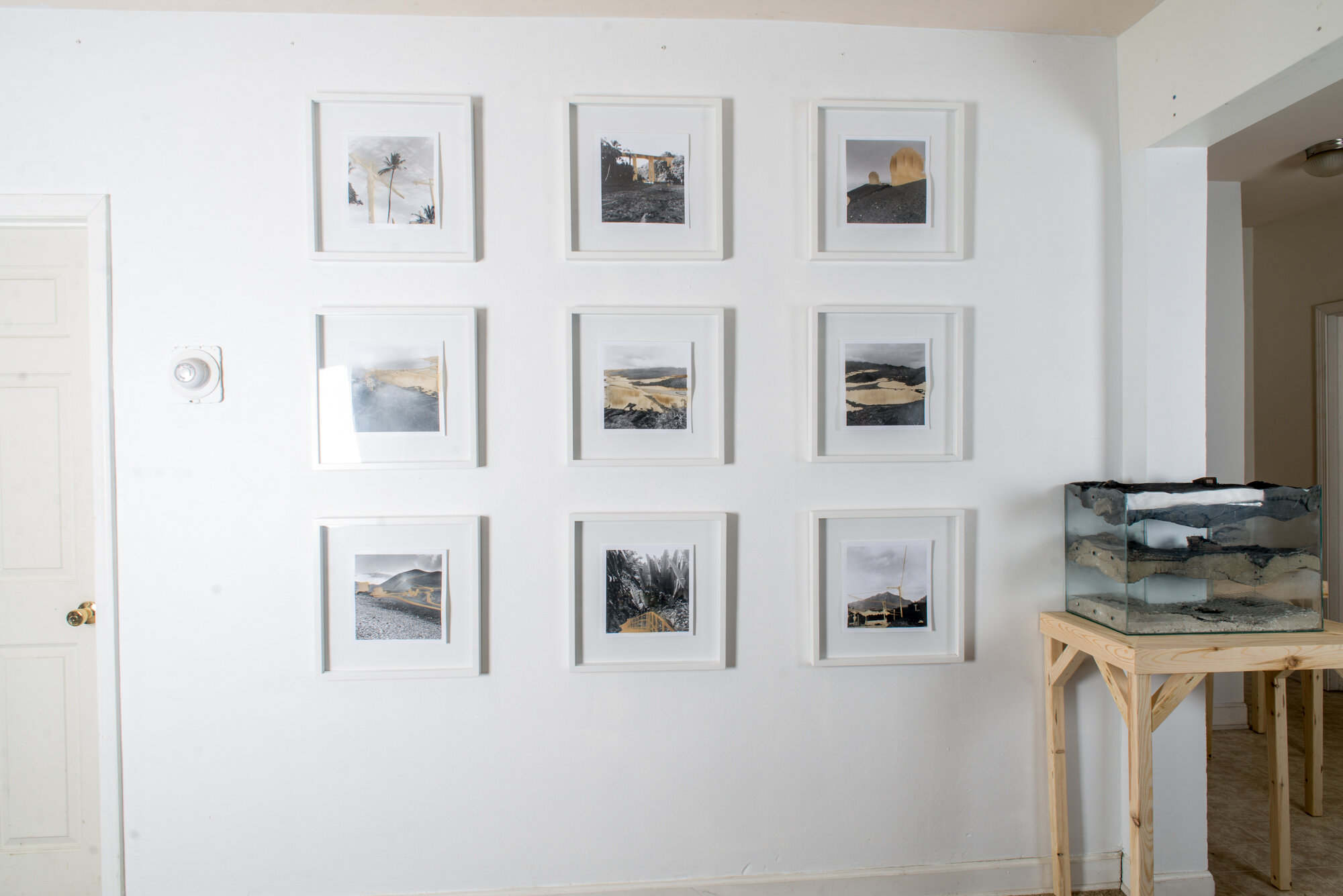
The installation of this work in my Wisconsin hale (home) was in response to the “safer-at-home” order due to COVID. I was stuck in my house, unable to be in the Hawaiian landscape. I installed work that depicts and imitates the natural landscape, bringing Hawaii into my house. The sculptures were built to fit the architectural elements of my house.
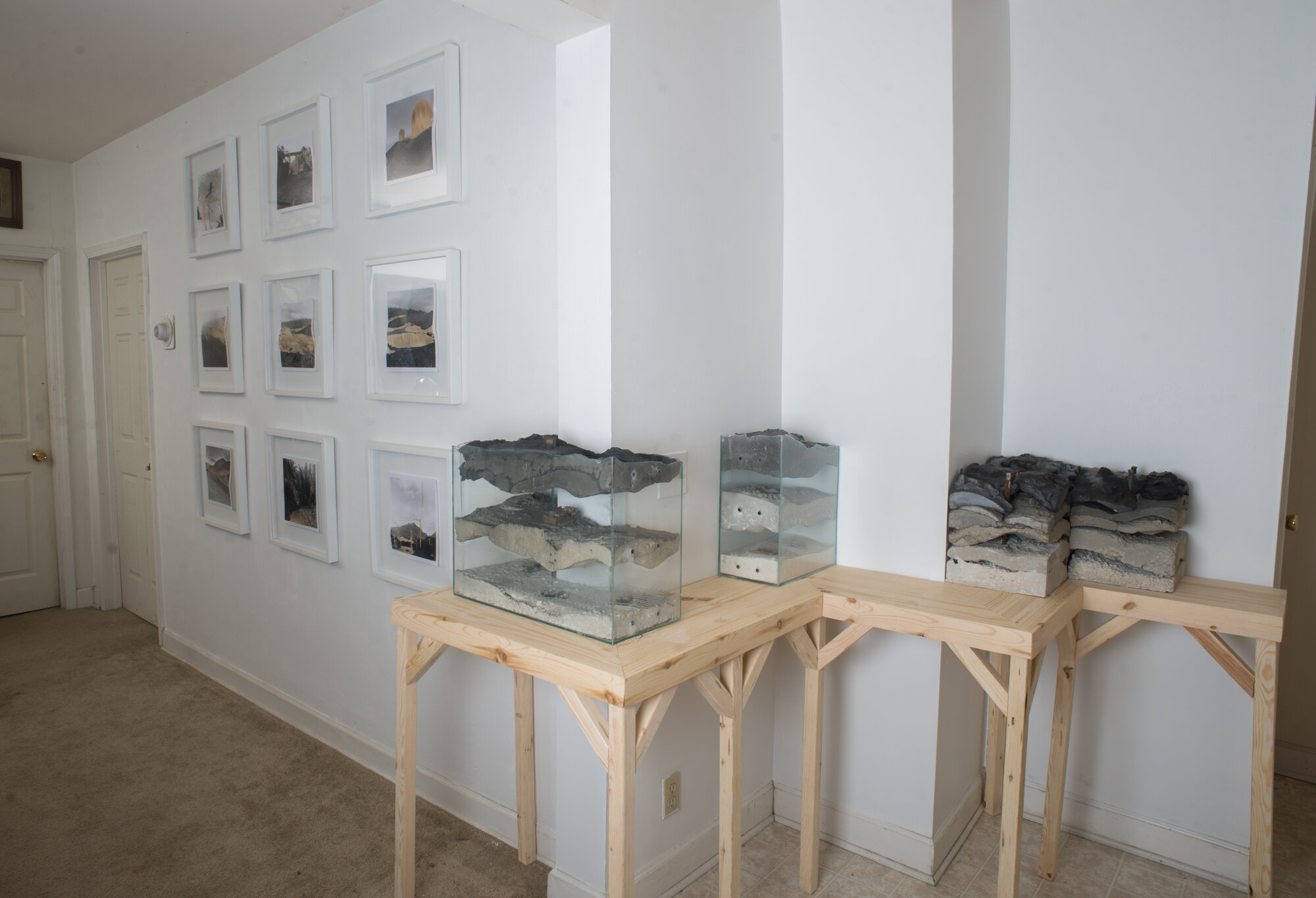

Materials: concrete, chipboard, wire mesh, and plexi
The cooled lava becomes a foundation for native Hawaiian plants and animals. For a fabricated structure to be built, a concrete foundation is poured. The imitated natural landscape in the sculpture, with layers of cast concrete, echoes the continuous building at the hands of both human and nature atop the existing land.
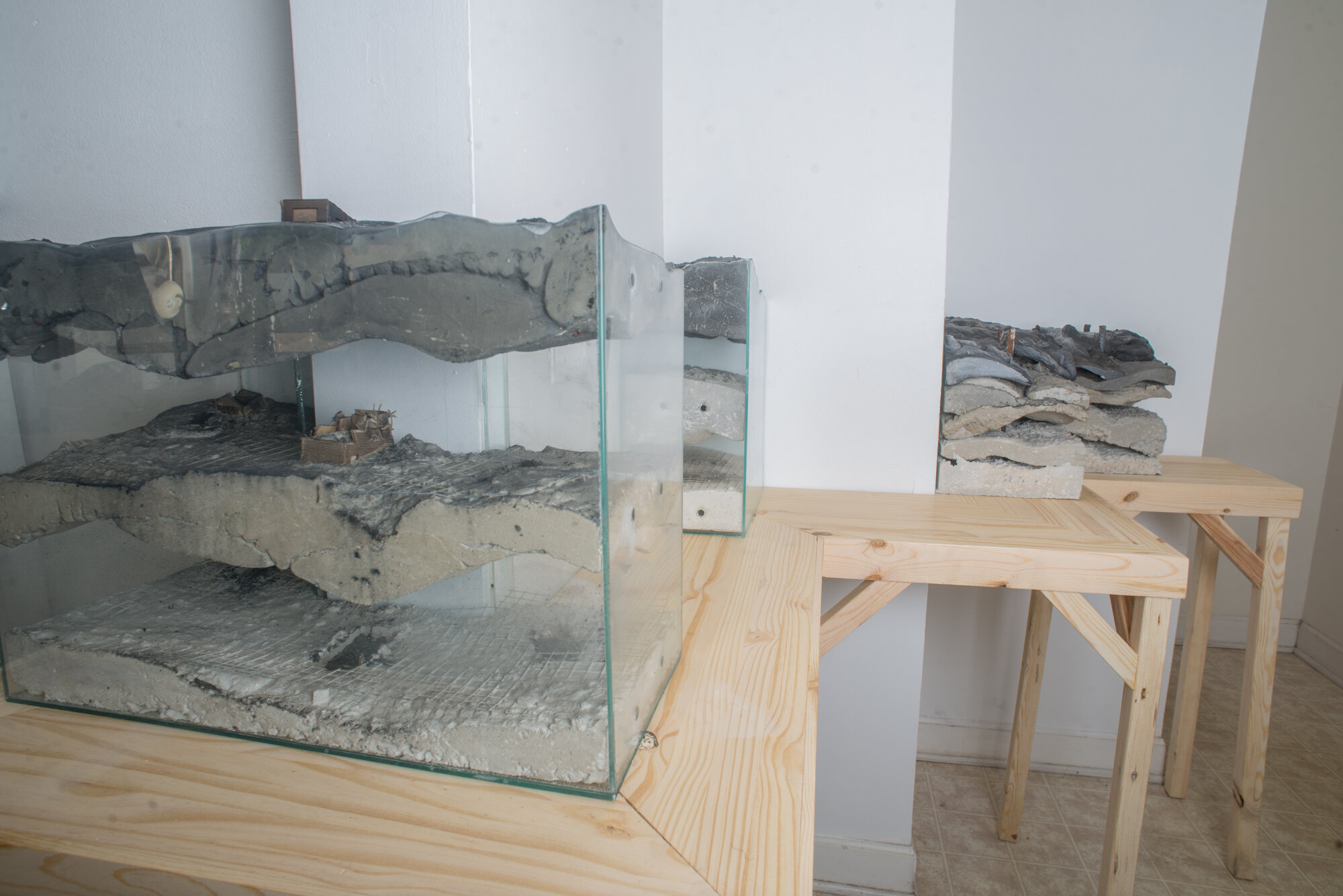
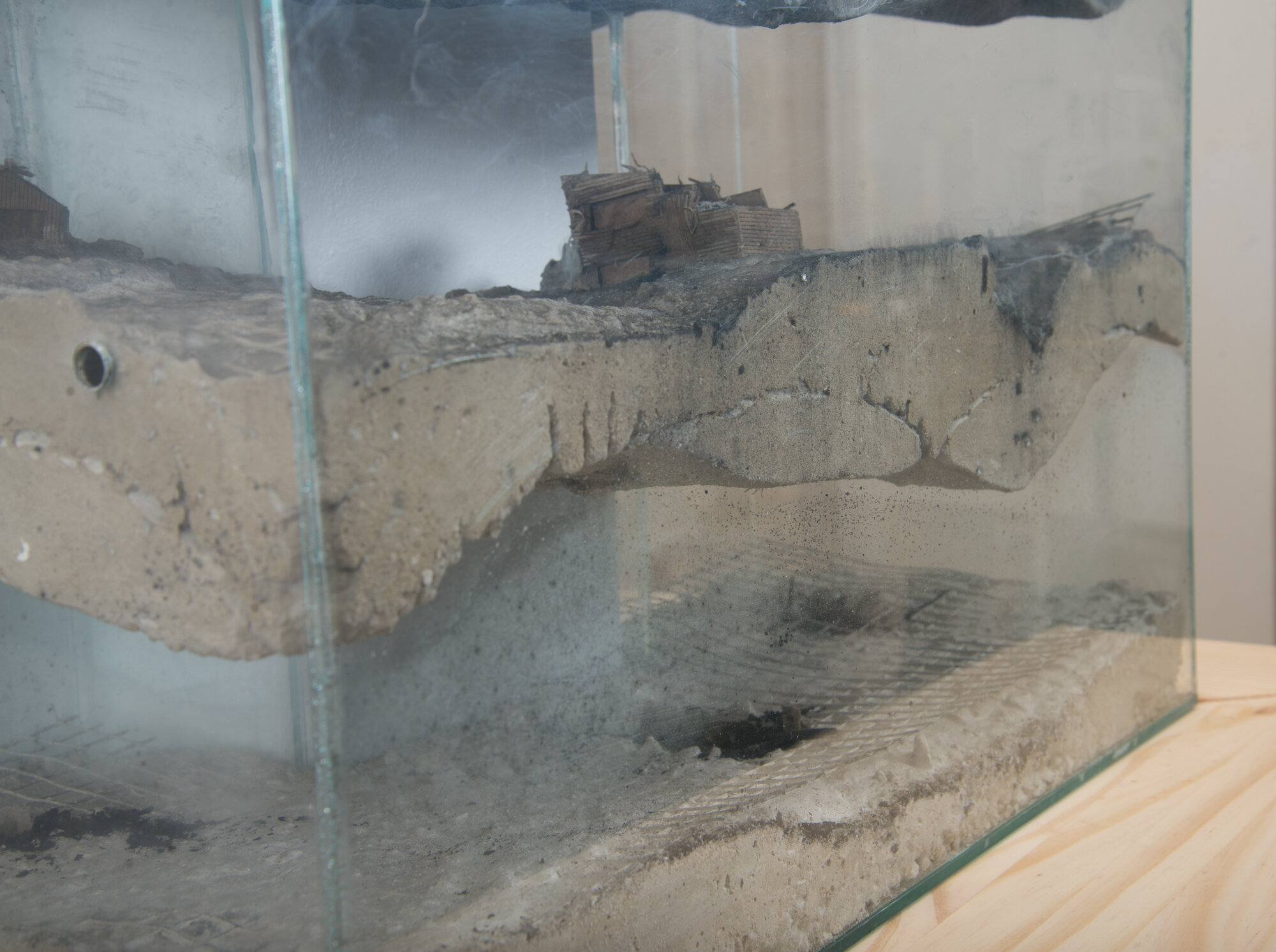
Materials: concrete, chipboard, wire mesh, and plexi
Each cast layer is defined by the color, the aggregate, and the exaggerated negative area that represents the space and time between each lava flow. This sculpture focuses on the rebuilding of homes on the land after each lava flow. While the state sells the unstable lava land, scientist from all over the world study the activity of Kilauea, the active volcano on the Big Island and 1990, 2016, 2018 references these realities.
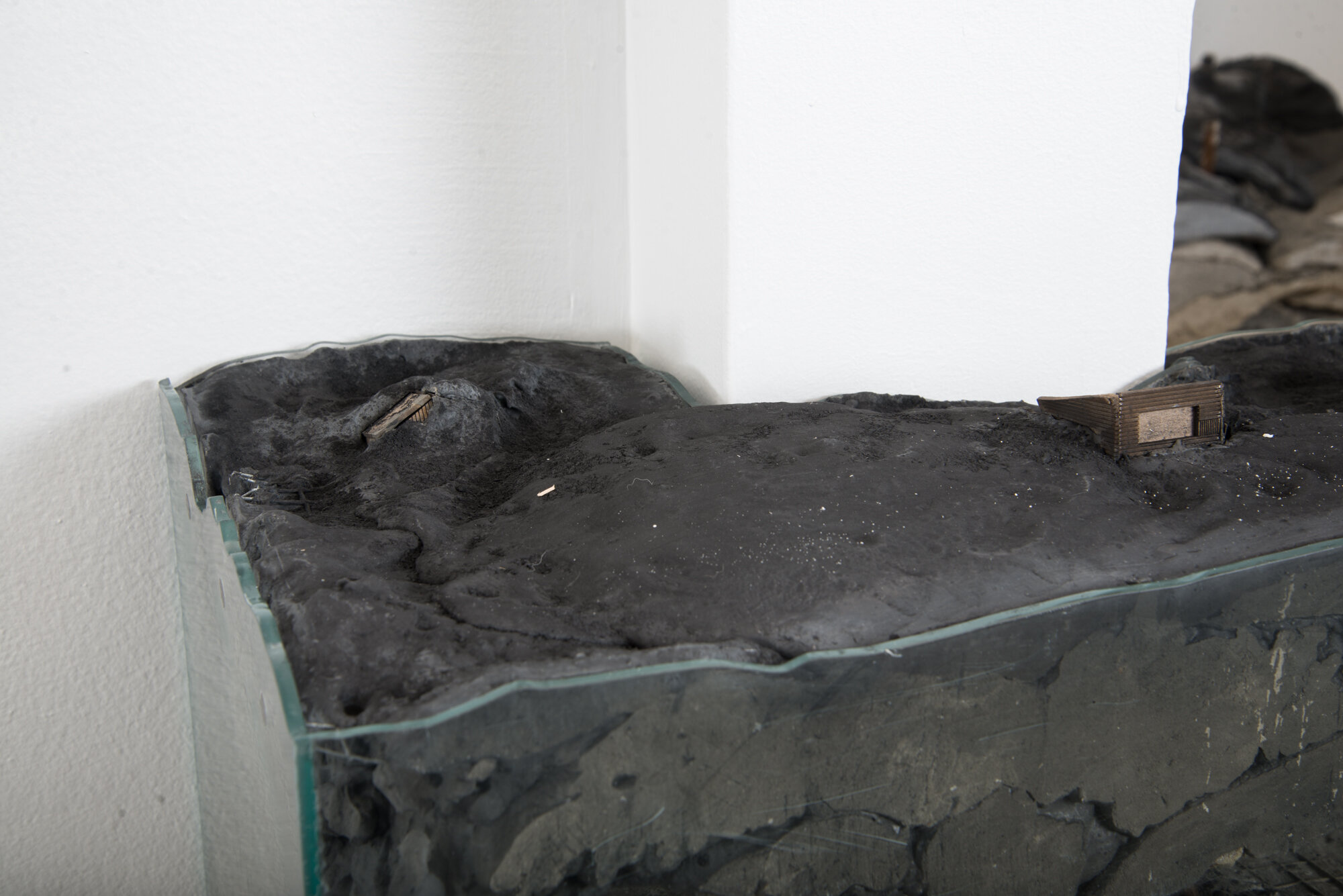
Materials: concrete, chipboard, wire mesh, and plexi
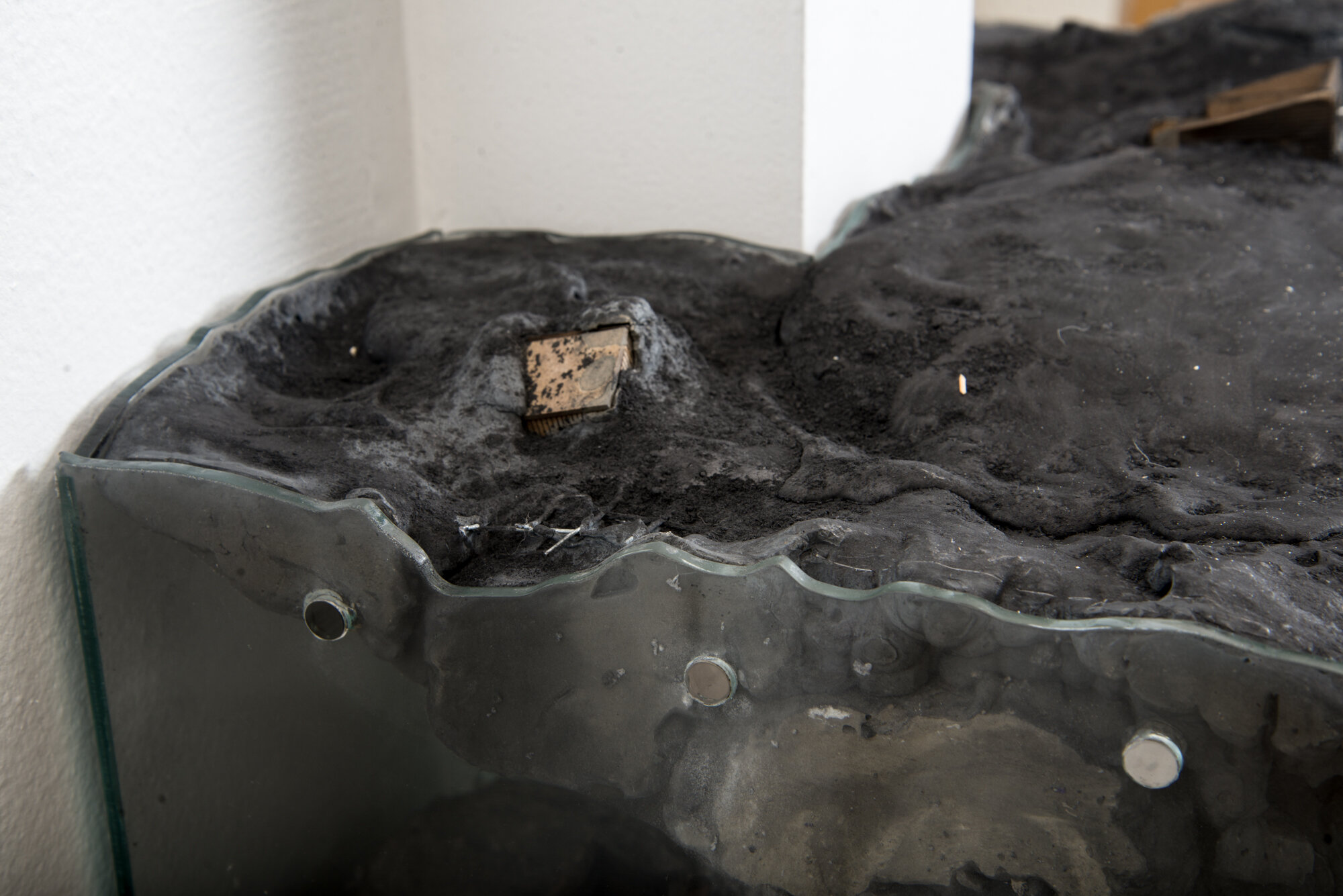
Materials: concrete, chipboard, wire mesh, and plexi
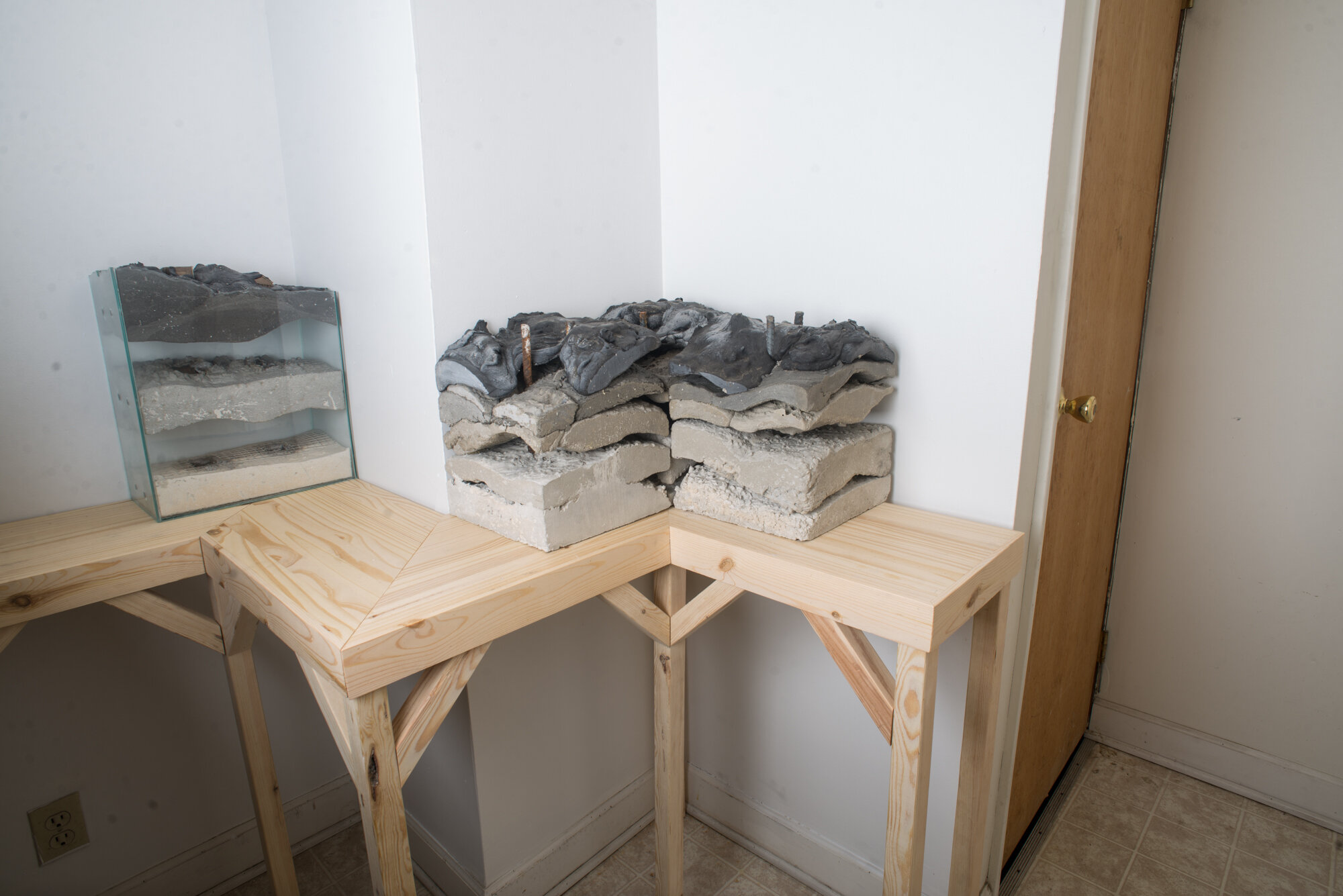
Materials: concrete and rebar
Dimensions: 12”x10”x10”
These square sculptures have different concrete types and color layers that are suspended by rebar. The negative space varies but carries visual tension between each layer. The tension references the physical conflict between the built and the natural landscape and refers to the emotional tension between the native and local protectors of the land and the developers.
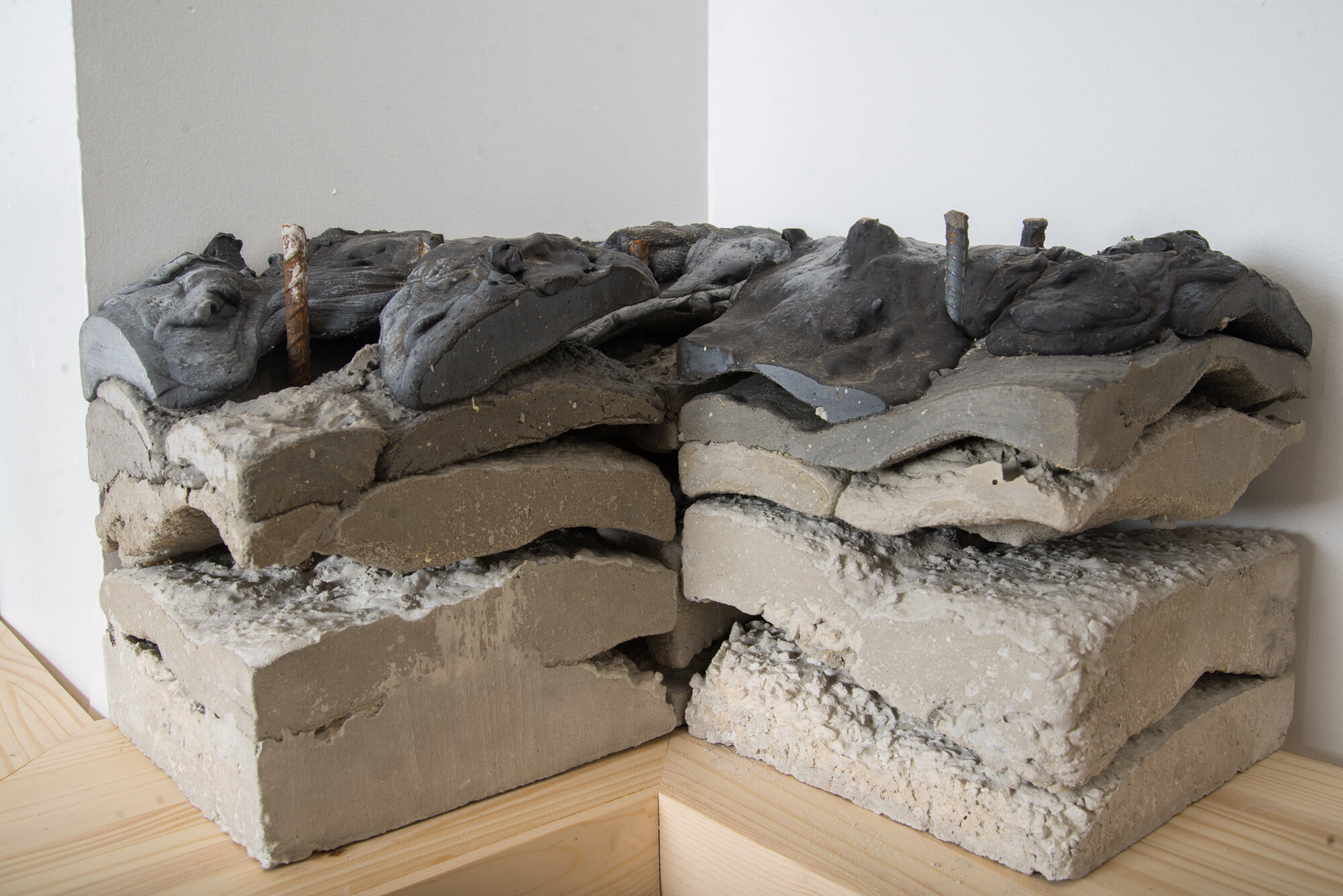
Materials: concrete and rebar
Dimensions: 12”x10”x10”
These sculptural objects can be arranged and rearranged to create larger landscapes. While there are no physical houses within this landscape, the square cast footprint references a house foundation along with being created by traditional construction materials. These objects refer to a core sample but display more movement between the lava flows than what would be present in nature.
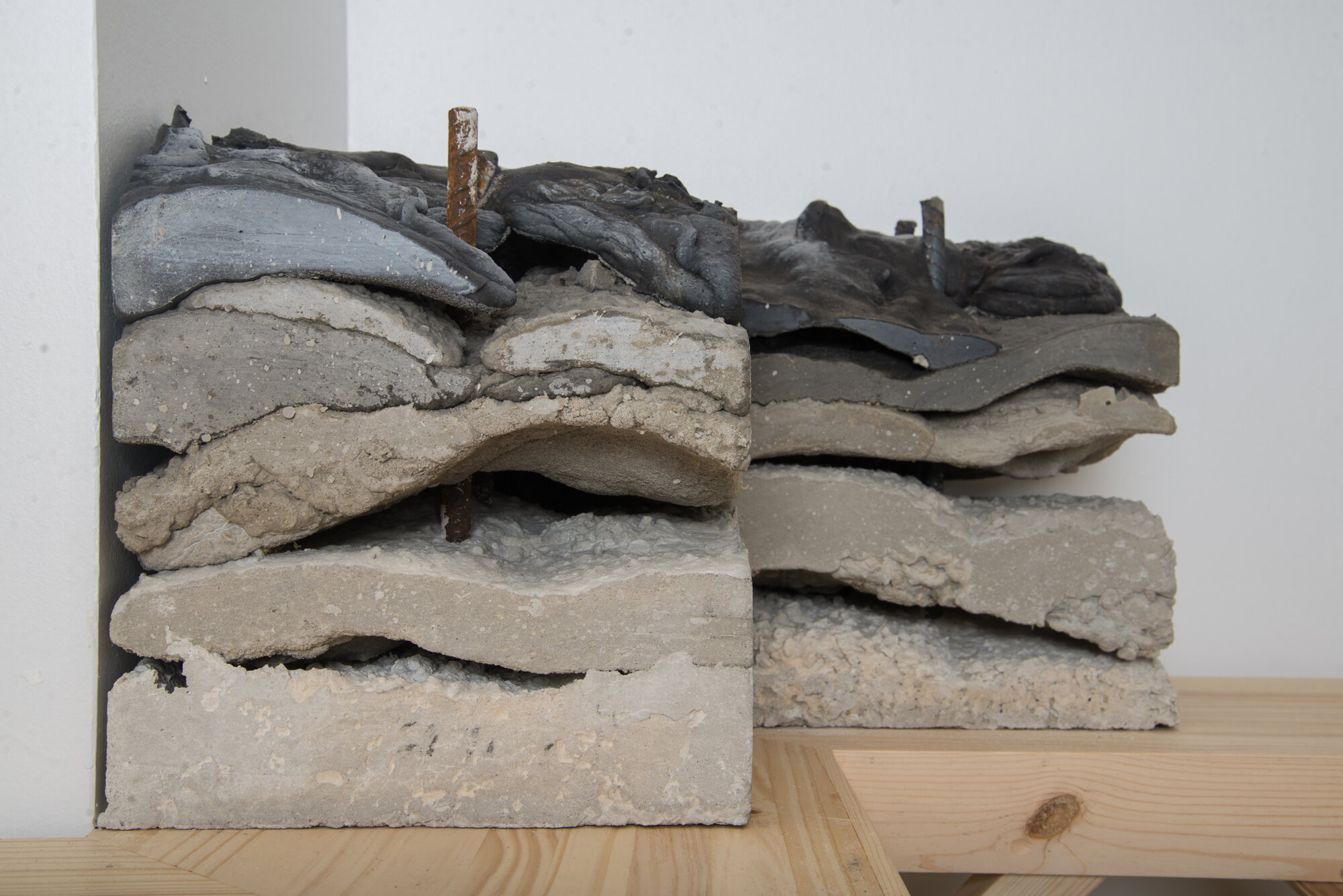
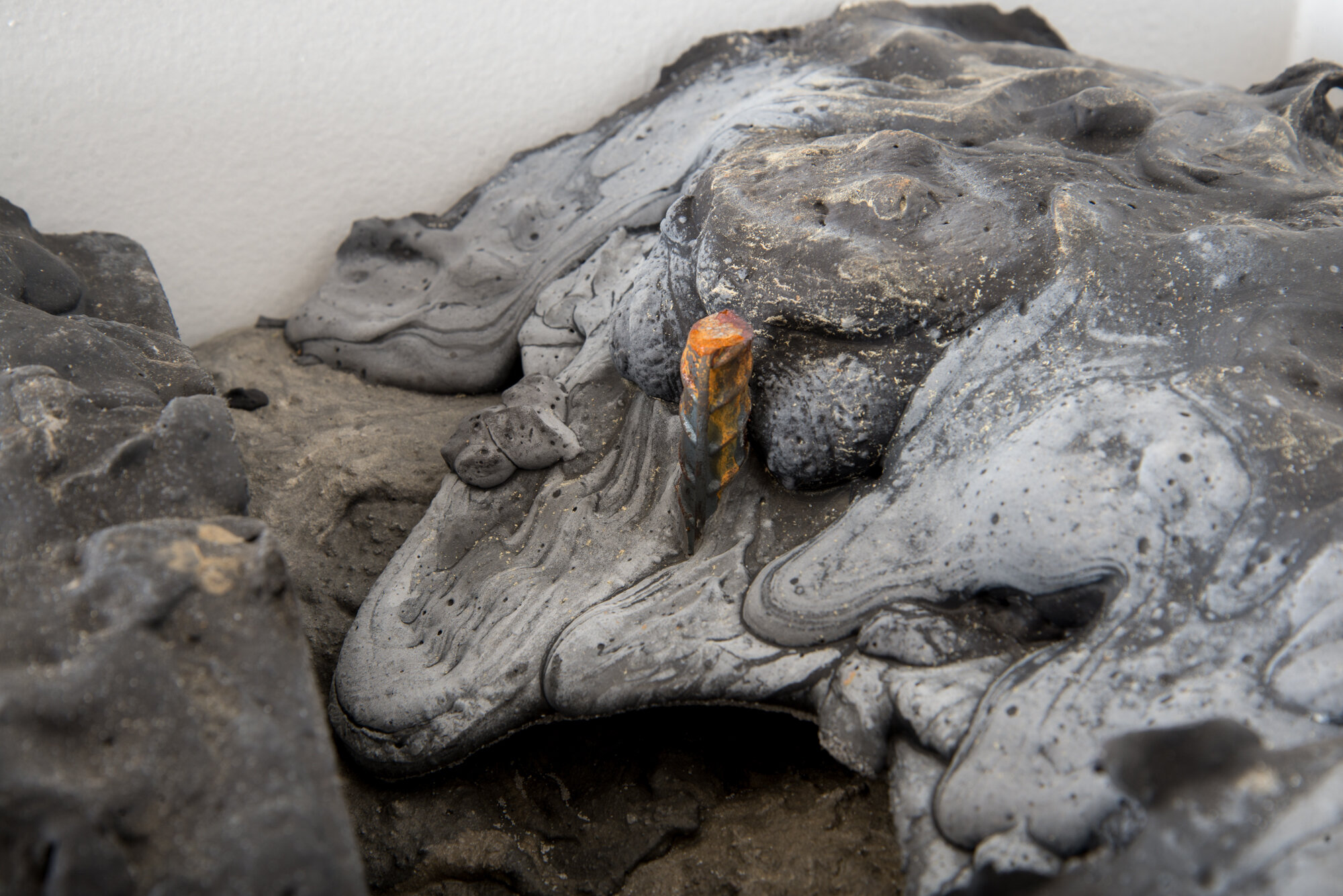
Materials: concrete and rebar
Dimensions: 12”x10”x10”
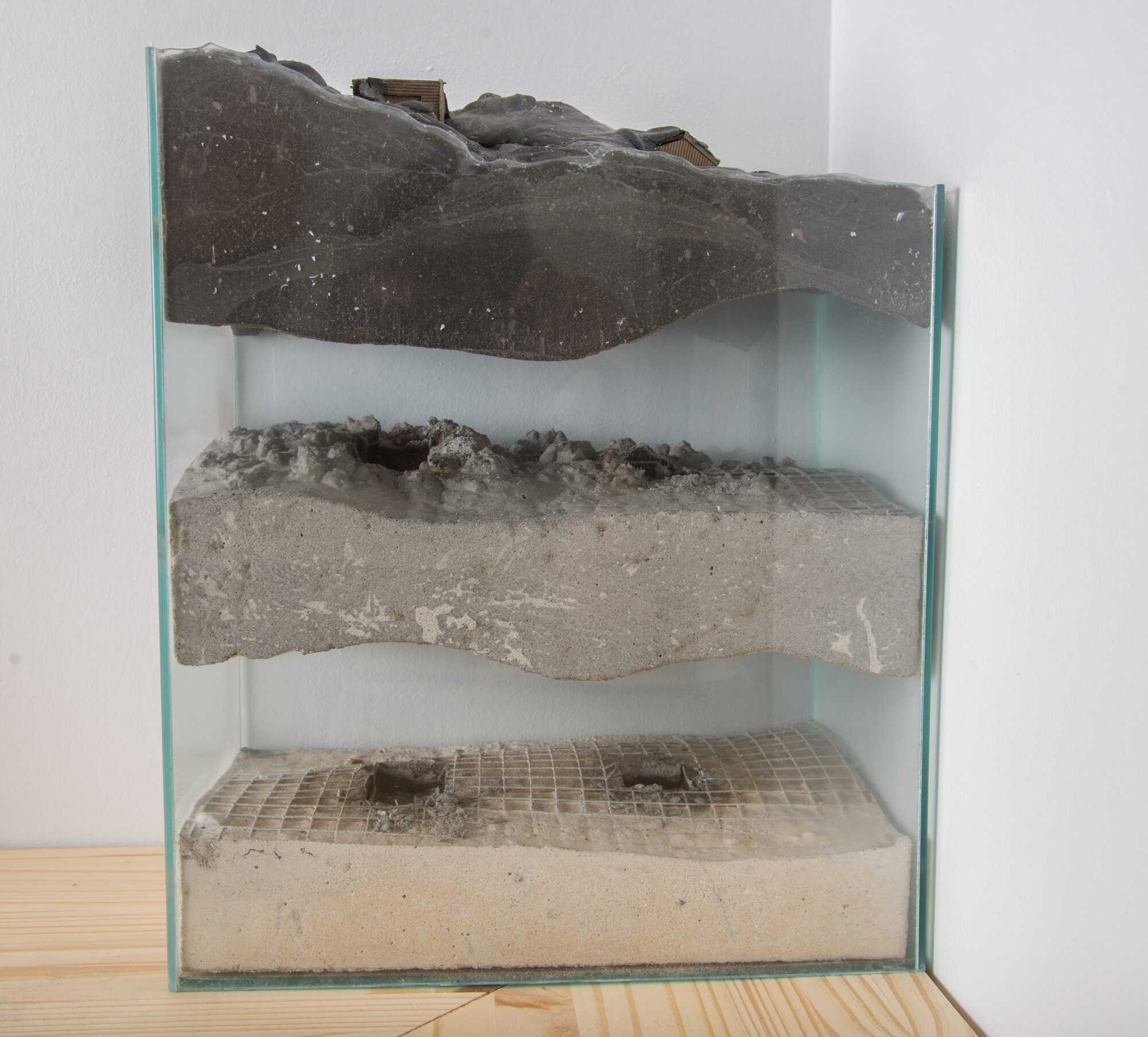
Materials: concrete, chipboard, wire mesh, and plexi
Dimensions: 18”x14”x8”
The sculpture uses an iteration of casting to imitate but not replicate the lava landscape. It becomes more about the materials and the object rather than the exact texture of the lava. The focus is on the strain caused by the continuous attempt to own and control the land through fabricated builds that ultimately are destroyed by the natural environment.
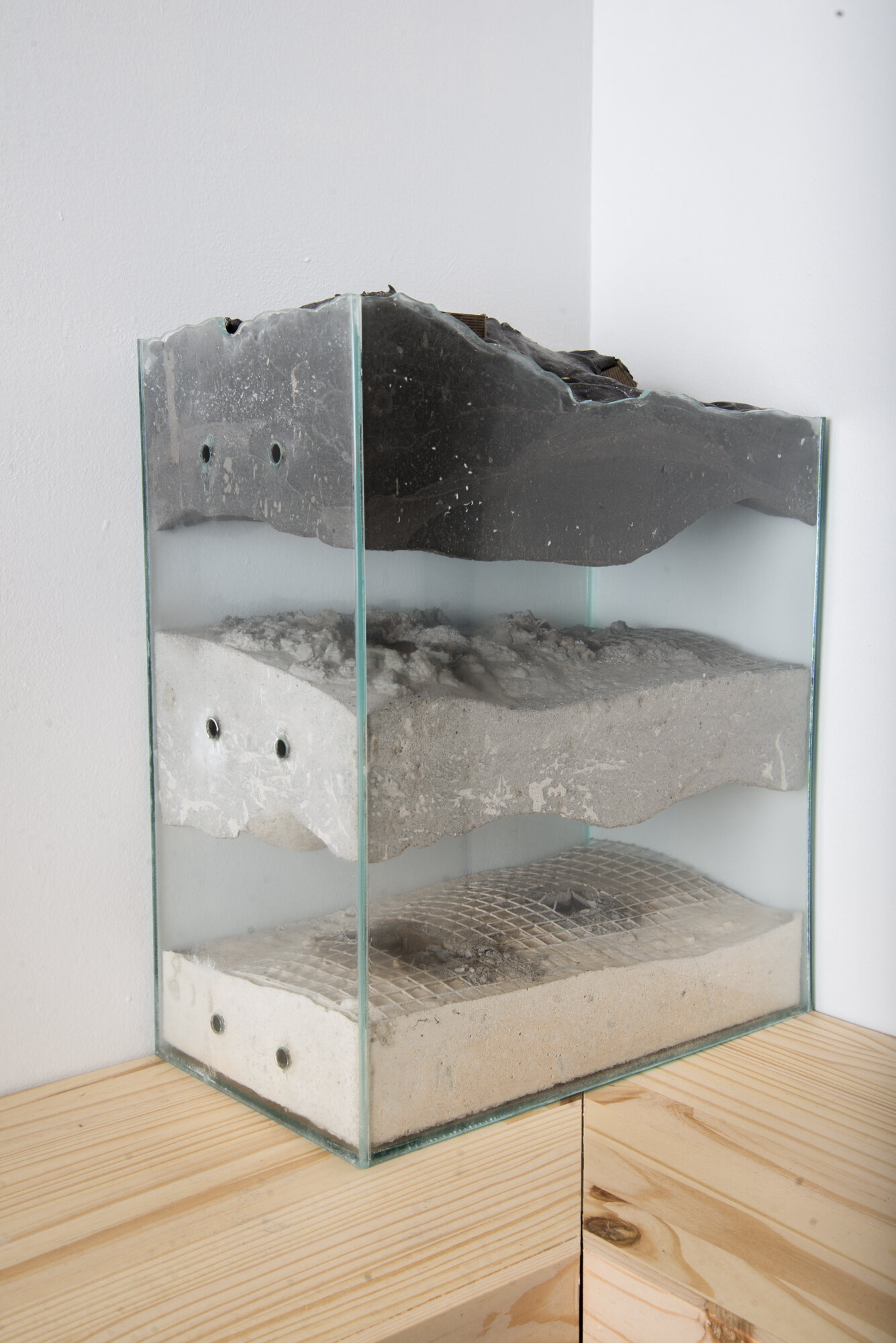
Materials: concrete, chipboard, wire mesh, and plexi
Dimensions: 18”x14”x8”
The plexi encased sculpture displays an imitated lava landscape while also acting as an art object. The top of the specimen has been finished to reference the diverse movement of the fabricated landscape. Overall, this sculpture visually references a scientific core sample examines a large landscape on the Big Island does not use any objects or sacred land that holds mana in Hawaii. However, this sculpture references the power and destruction the lava has on the fabricated buildings.
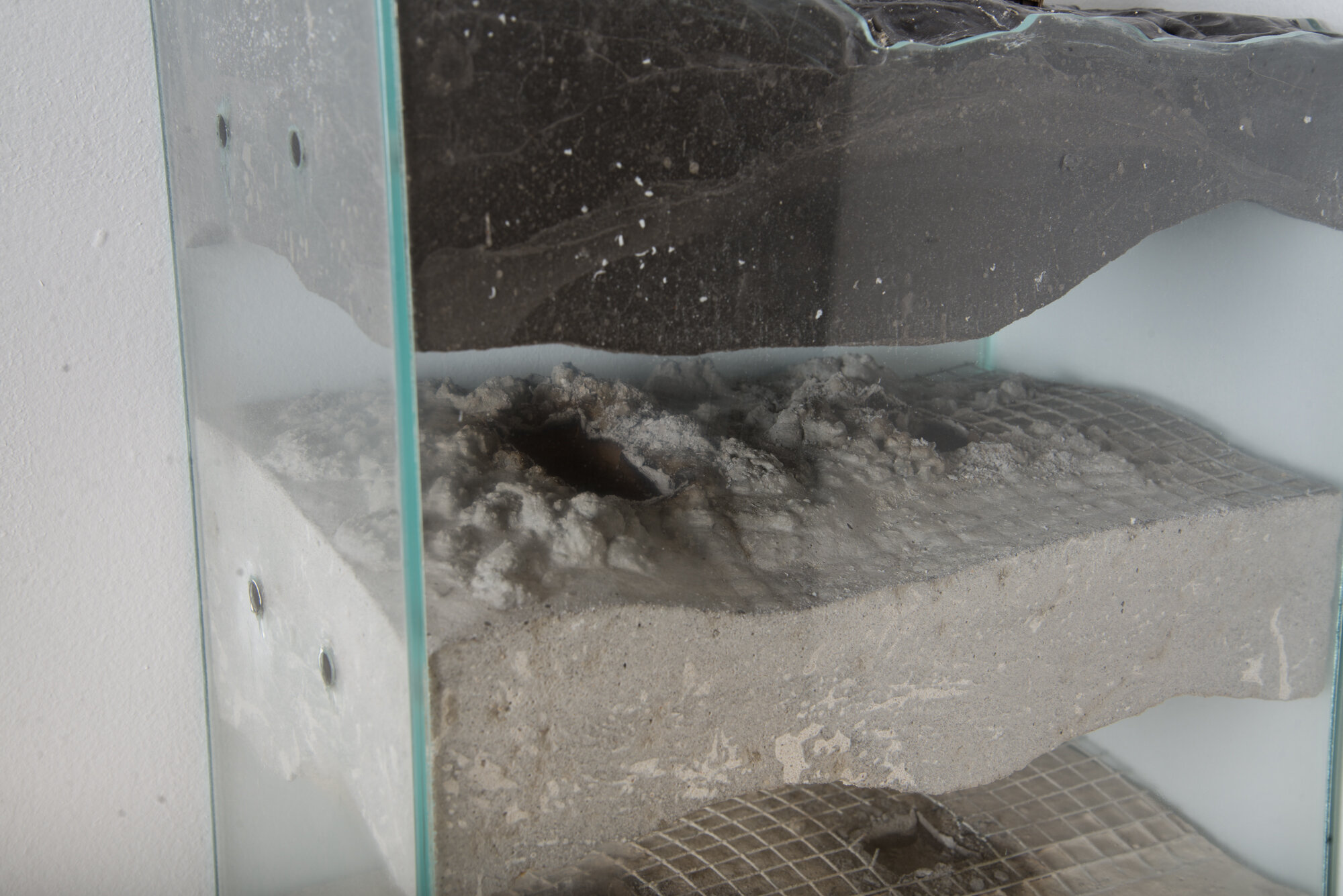
Materials: concrete, chipboard, wire mesh, and plexi
Dimensions: 18”x14”x8”
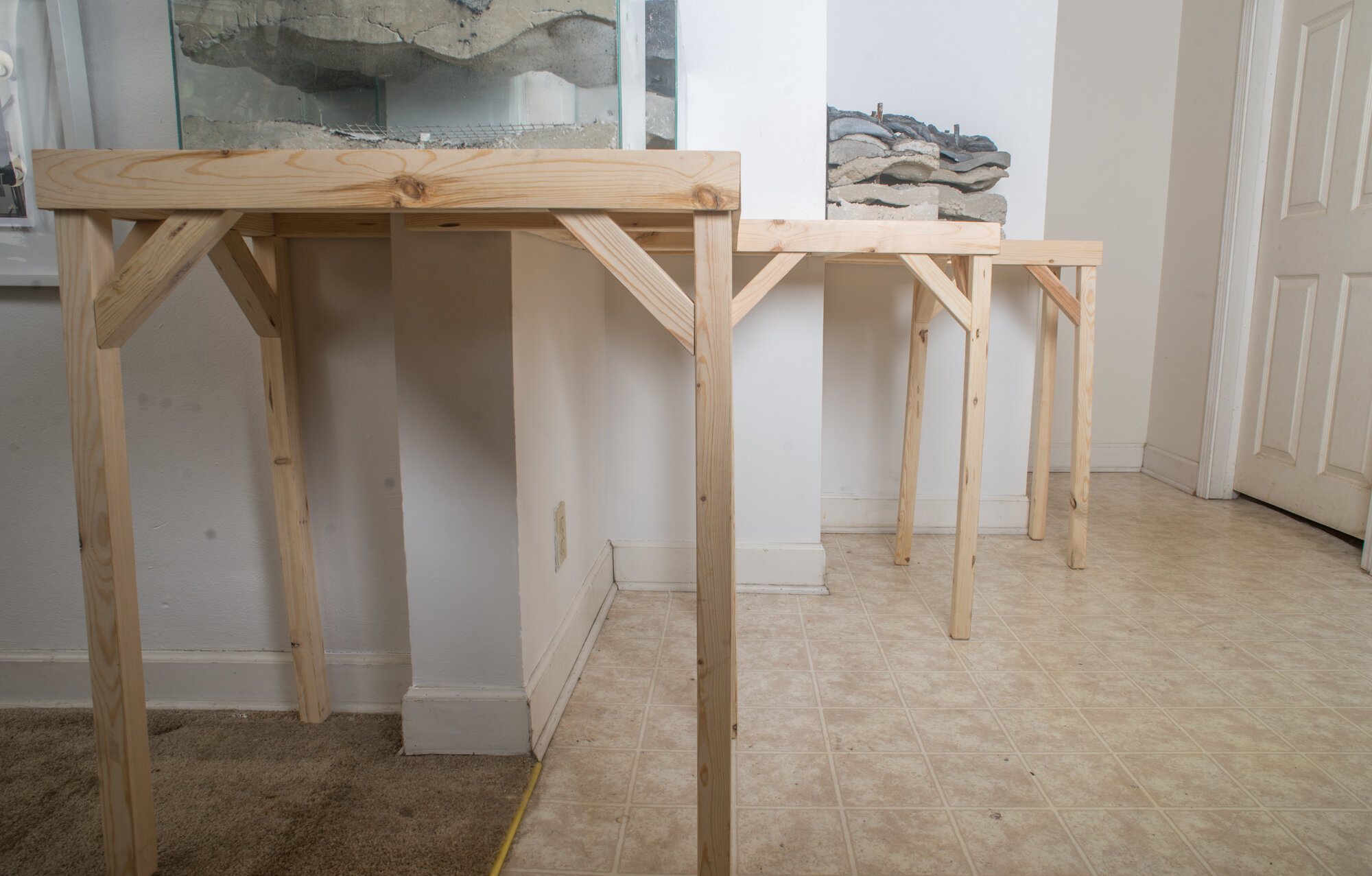
The pedestals that display these imitated lava landscape sculptures are also important objects in this series. These pedestals legs are built with 2”x2”s and reference the stilts that many of the houses are built on. The top of the pedestal is made from 1” thick glued pined and then famed. These materials are common building materials that are used in Hawaii to build many of the homes that are built on the lava field.
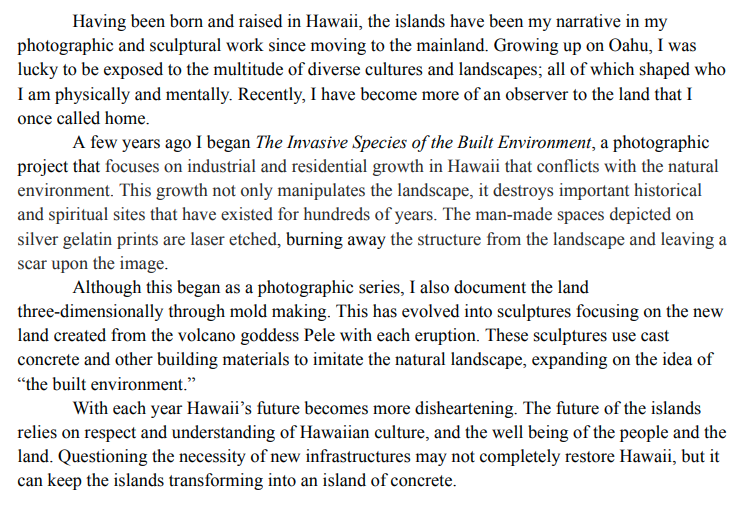
















The installation of this work in my Wisconsin hale (home) was in response to the “safer-at-home” order due to COVID. I was stuck in my house, unable to be in the Hawaiian landscape. I installed work that depicts and imitates the natural landscape, bringing Hawaii into my house. The sculptures were built to fit the architectural elements of my house.
Materials: concrete, chipboard, wire mesh, and plexi
The cooled lava becomes a foundation for native Hawaiian plants and animals. For a fabricated structure to be built, a concrete foundation is poured. The imitated natural landscape in the sculpture, with layers of cast concrete, echoes the continuous building at the hands of both human and nature atop the existing land.
Materials: concrete, chipboard, wire mesh, and plexi
Each cast layer is defined by the color, the aggregate, and the exaggerated negative area that represents the space and time between each lava flow. This sculpture focuses on the rebuilding of homes on the land after each lava flow. While the state sells the unstable lava land, scientist from all over the world study the activity of Kilauea, the active volcano on the Big Island and 1990, 2016, 2018 references these realities.
Materials: concrete, chipboard, wire mesh, and plexi
Materials: concrete, chipboard, wire mesh, and plexi
Materials: concrete and rebar
Dimensions: 12”x10”x10”
These square sculptures have different concrete types and color layers that are suspended by rebar. The negative space varies but carries visual tension between each layer. The tension references the physical conflict between the built and the natural landscape and refers to the emotional tension between the native and local protectors of the land and the developers.
Materials: concrete and rebar
Dimensions: 12”x10”x10”
These sculptural objects can be arranged and rearranged to create larger landscapes. While there are no physical houses within this landscape, the square cast footprint references a house foundation along with being created by traditional construction materials. These objects refer to a core sample but display more movement between the lava flows than what would be present in nature.
Materials: concrete and rebar
Dimensions: 12”x10”x10”
Materials: concrete, chipboard, wire mesh, and plexi
Dimensions: 18”x14”x8”
The sculpture uses an iteration of casting to imitate but not replicate the lava landscape. It becomes more about the materials and the object rather than the exact texture of the lava. The focus is on the strain caused by the continuous attempt to own and control the land through fabricated builds that ultimately are destroyed by the natural environment.
Materials: concrete, chipboard, wire mesh, and plexi
Dimensions: 18”x14”x8”
The plexi encased sculpture displays an imitated lava landscape while also acting as an art object. The top of the specimen has been finished to reference the diverse movement of the fabricated landscape. Overall, this sculpture visually references a scientific core sample examines a large landscape on the Big Island does not use any objects or sacred land that holds mana in Hawaii. However, this sculpture references the power and destruction the lava has on the fabricated buildings.
Materials: concrete, chipboard, wire mesh, and plexi
Dimensions: 18”x14”x8”
The pedestals that display these imitated lava landscape sculptures are also important objects in this series. These pedestals legs are built with 2”x2”s and reference the stilts that many of the houses are built on. The top of the pedestal is made from 1” thick glued pined and then famed. These materials are common building materials that are used in Hawaii to build many of the homes that are built on the lava field.